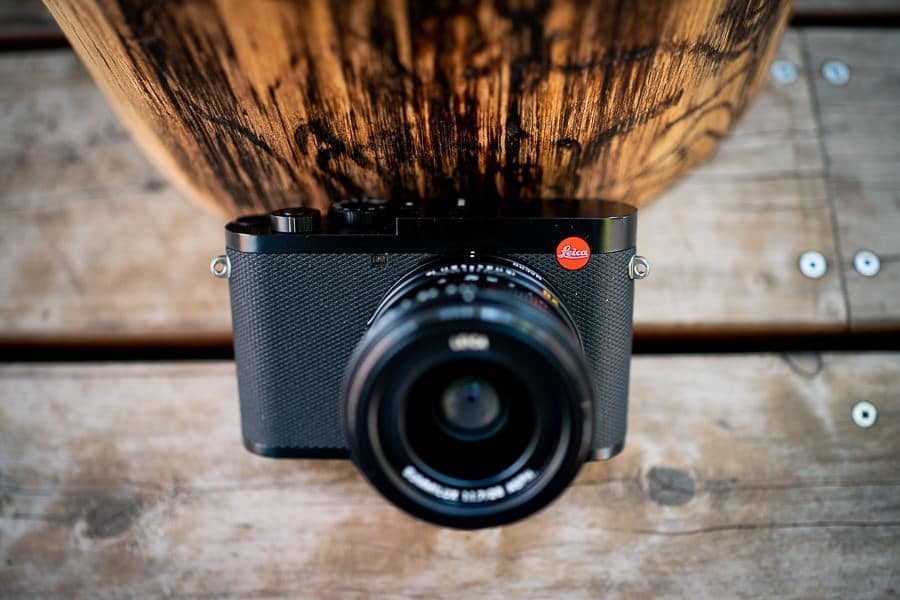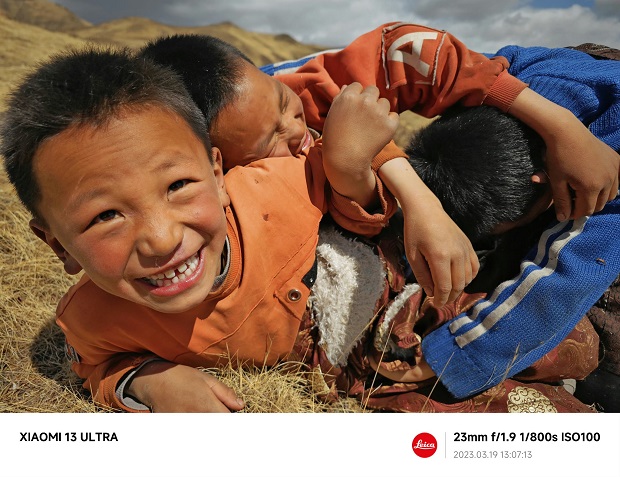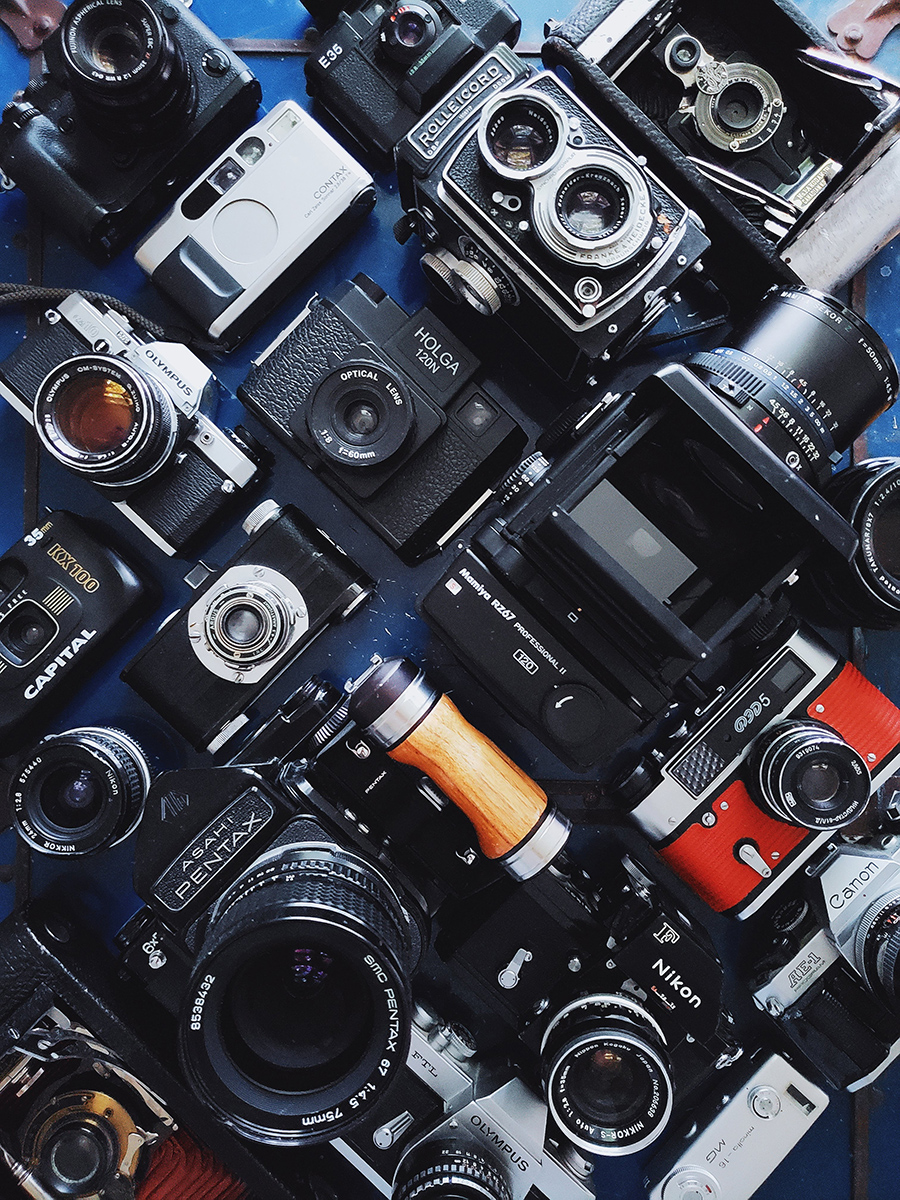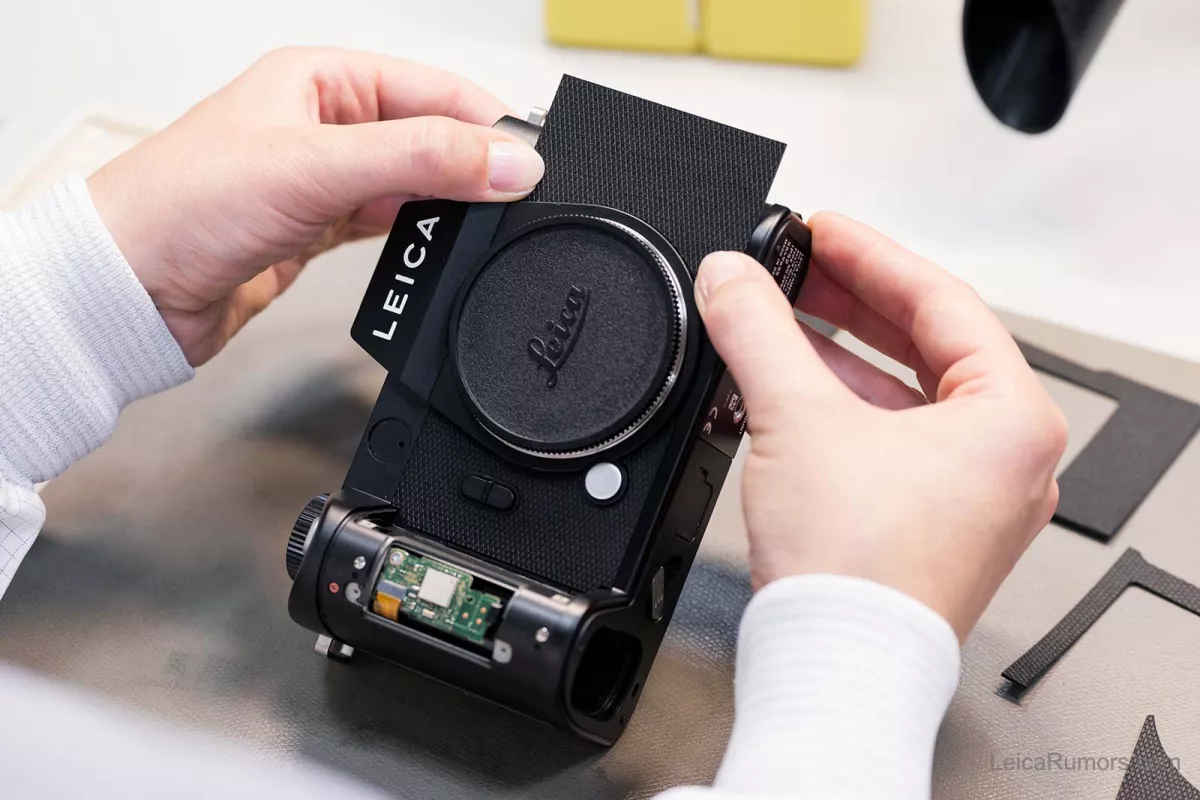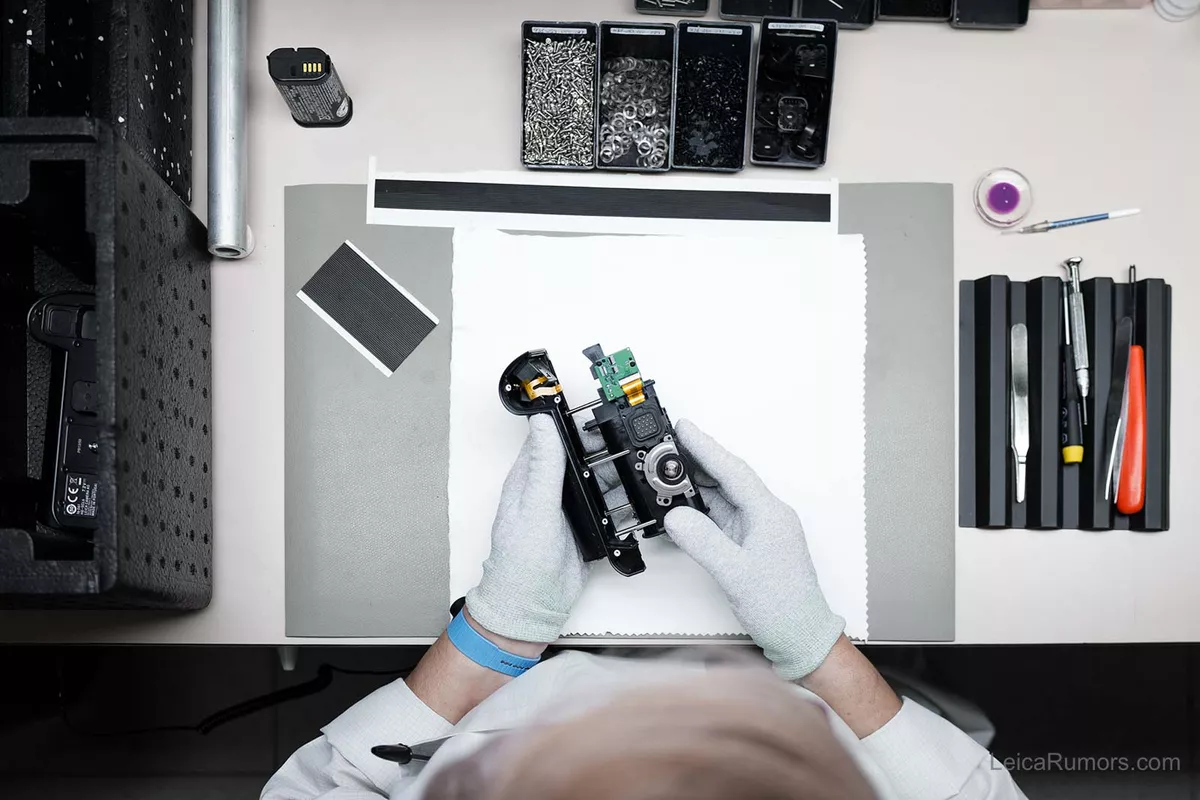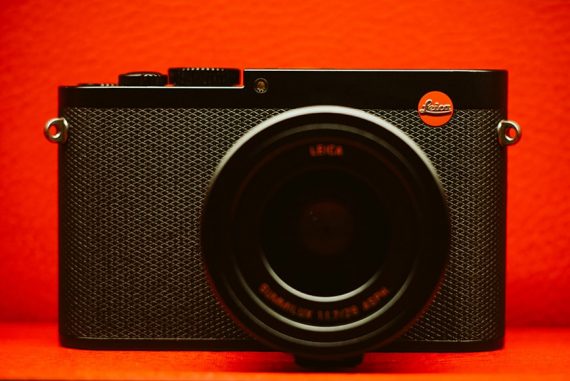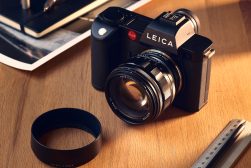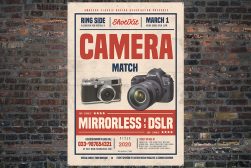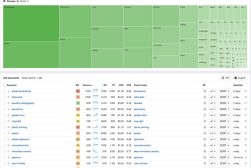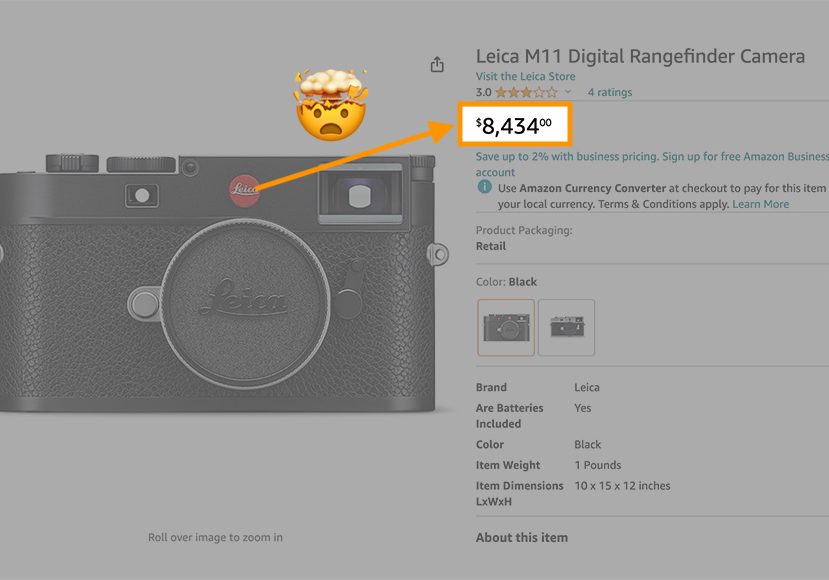
Why Are Cameras Still So Expensive in 2024? (Latest Reports)
One of the hurdles for newcomers to photography is the price of gear, but why exactly are digital camera so expensive? We take a deep dive into the reasons.
Learn | By Jeff Collier
Have you ever wondered why are cameras so expensive?… (Despite the price of technology, in general, coming down.)
You can get a flat-screen TV for under 200 bucks, but the price of digital cameras is still sky-high.
Sure, you can buy cameras for less than $500, but better quality mirrorless cameras run into the thousands.
Heck, the Leica Q3 is an eye-watering $5,700!
With smartphone cameras taking such great photos, is there really any advantage to using a pricey digital camera?
In this article, we’ll discuss exactly that, taking a look at some of the world’s most expensive camera brands on the way.
But first, let’s answer the question of why cameras are still so expensive in 2024.
 The Sony a1 is a $6,500 full-frame mirrorless camera.[/caption]
The Sony a1 is a $6,500 full-frame mirrorless camera.[/caption]
Multiple factors contribute to the high prices of cameras nowadays. Here’s a breakdown of each one:
Global Pandemic Impact
The COVID-19 pandemic has dramatically affected the supply chains of various industries, including the optics and camera market.
The efforts to control the disease led to labor force reductions, production slowdowns or halts, and a significant drop in import/export volumes, causing a widespread shortage of cameras and other photography equipment. This shortage translates to higher prices of available units.
While the gap in global trading that ensued from the pandemic has since decreased, the weakening global demand, geopolitical tensions, and tighter fiscal/monetary policies still keep the situation under pressure.
The projection for global trade volume in 2024 remains well below the pre-pandemic forecast.
Natural Disasters
The camera market has become increasingly vulnerable to natural disasters that affect the semiconductor industry and disrupt the chip supply chain, leading to shortages and inflated prices. Examples include:
- The drought in Taiwan, which manufactures the majority of the world’s semiconductors.
- The fire at the AKM factory in Japan; one of the world’s largest chip manufacturers)
- The winter storms in Texas; cause blackouts that disrupt production lines in chip manufacturing facilities.
Niche Market
The camera market is turning into a niche market as more people are satisfied using entry-level digital cameras or smartphone cameras and fewer people are after high-end photography gear.
As such, lower-end options are becoming less available whereas expensive, quality cameras are slowly becoming the prevalent options to cater to professional photographers.
R&D Costs
The budget allocated for the research and development of camera components accounts for a major chunk of the elevated prices, especially the more advanced parts.
The need for constant evolution in the camera industry calls for the services of high-end engineers, the use of raw materials, process monitoring, and many more aspects that demand a lot of funding.
Production Costs
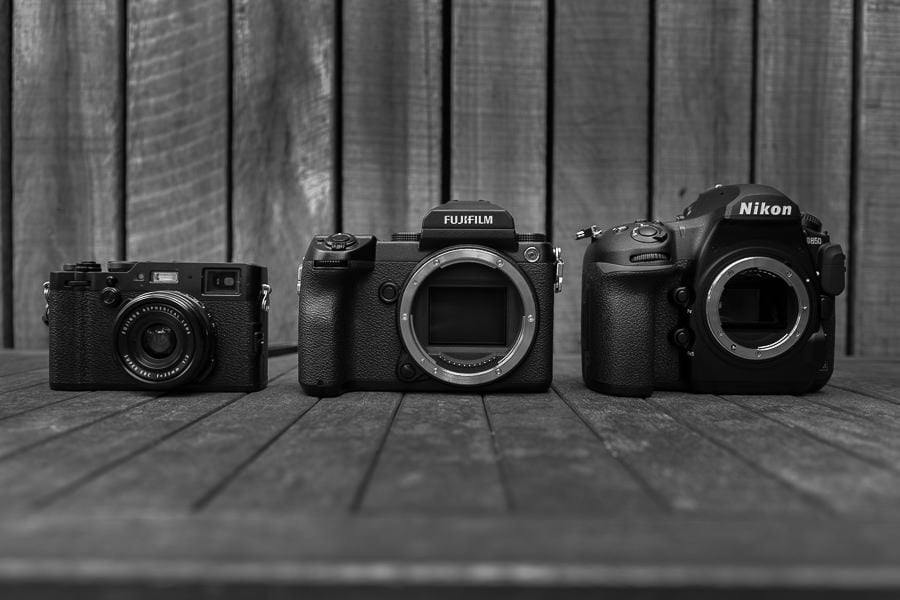
Most brands have expensive camera models.
Newer camera models have higher prices because of the increased production costs due to the complexity of components and the technology required for manufacturing.
Professional cameras feature expensive materials such as weather-resistant anti-reflection coatings and robust metal camera bodies.
How Much Do You REALLY Know About Photography?! 🤔
Test your photography knowledge with this quick quiz!
See how much you really know about photography...

Purchasing these materials is costly, and the refined level of precision needed for production raises the expenses even more.
Not to mention, some models are hand-made for ultra-precision, which is a costly time and effort investment.
Marketing Costs
Camera brands spend millions of dollars on marketing for their products. From a business viewpoint, these costs must be factored into the final pricing of units to make up for advertisement expenses and still bring in profit.
Demand and Supply
High demand for high-quality photography equipment leads to price hikes. Even if the market is a niche, better imaging tools are constantly in demand.
Combine the high demand with the interruptions in the supply chain that we discussed earlier and you’ll see why camera prices go up.
Longevity
Camera companies invest a lot in the durability of their camera components to please their customer base. The materials and parts of cameras need to resist oxidation and weather elements as well as withstand wear and tear.
Such longevity doesn’t come cheap, and it reflects in the price of overall pricing of the cameras.
Perceived Value
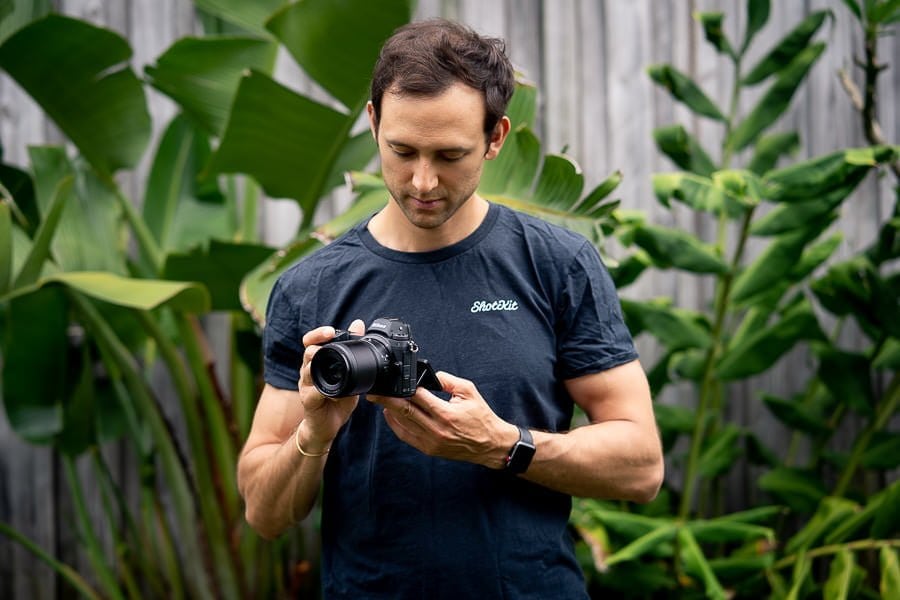
Many photographers place an intangible value on their cameras.
Customers generally tend to associate a higher price with higher quality. Brands know this concept of perceived value and widely apply it to their products.
So while their cameras may cost a lot to manufacture, their price tags will consider buyers’ perceived value and show a premium price.
Performance and Quality
The better performance and the higher quality you want to get from a camera, the more money you’ll have to pay.
To be able to take on heavy-duty usage and perform smoothly under harsh conditions for extended periods, cameras are made from special materials with advanced production techniques that demand a high budget.
A sharp, clear image quality requires brands to implement complex optical mechanisms and designs in their cameras for optimal output.
Developing these aspects and keeping up with newer industry standards prove to be an expensive venture.
Regulatory Changes
Last but not least, alterations in trade regulations and policies between countries can affect the costs of importing and exporting, which can undoubtedly impact the camera market.
For example, the ongoing trade tension (also referred to as trade war) between the US and China can lead to increased prices as the country resorts to trading with other nations that don’t necessarily match China’s infamous low production costs.
Are Expensive Cameras Worth It?
The answer comes down to your specific situation and what you’re planning to use the camera for.
While many casual users prefer to stick with affordable digital cameras, there’s a case to be made in favor of investing in an expensive camera whether you’re a hobbyist or a professional.
Here are a few reasons to consider:
You Get More and Better Features
Not only are high-end cameras equipped with more features, but they also offer better performance from features they have in common with affordable point and shoot cameras.
For example, image stabilization and internal zoom in a high quality camera are miles ahead of consumer-grade options. The speed and smoothness of the results are well worth the money.
Additionally, sensors on quality DSLR cameras are significantly larger than regular sensors on a point and shoot camera or a smartphone camera.
While the former can capture millions of pixels per image, the latter captures an average of a few hundred thousand pixels per image.
The Image Quality Is Superior
Professional mirrorless and DSLR cameras packing more and better features will deliver far superior picture quality. Their construction uses higher-quality materials, more advanced components, and more precise manufacturing techniques.
If you’re a photographer or your career involves an imaging element -aka most social media-driven careers-, paying extra for better image quality is a wise investment.
Aside from the professional aspect, an expensive camera will help you keep your memories with family and friends in a high-quality format.
Greater Versatility
The level of versatility you get from an expensive mirrorless or DSLR camera beats anything a point and shoot camera or a smartphone camera can deliver.
The latter allows you to swap lenses so you can capture different types of shots and experiment with a wide range of effects and specs. You can’t get that with cheaper models.
You Feel Different When Using Expensive Cameras
This is a little anecdotal, but ask any Leica owner if they think their camera is ‘worth’ $5,000+ and they’ll probably talk about how the camera makes them feel.
The sum of the parts of an expensive camera is likely to be well less than the price you pay for it, but if using a premium mirrorless or DSLR camera makes you feel good, this is something you can’t put a price on.
Check out the video above where portrait photographer Manny Ortiz uses a Leica for the first time and talks about exactly this.
You Can Expect a Longer Lifespan
High-end cameras are built to last. A metal camera body coupled with weather-sealed components guarantees better durability.
Additionally, lenses are mostly interchangeable so your lens collection will still work on another camera body if yours gets damaged and vice versa.
The Resale Value Is Higher
One more reason why investing in an expensive camera can be a good idea is the high resale value.
While point-and-shoot cameras cost less initially, they lose at least half of their resale value upon usage.
High-end DSLR cameras, on the other hand, hold their value for several years.
First of all, technology upgrades don’t drop very frequently, so the unit is generally considered new for around 5 to 10 years.
Secondly, this applies to expensive camera bodies more than modern lenses.
Camera lenses don’t contain electronic parts, so they’re immune to expiration and degradation. They keep their resale value indefinitely, allowing you to use older lenses on newer cameras or sell them at a price very close to what you paid for them multiple years later.
How Has Smartphone Photography Affected Camera Purchasing?
With the sweeping spread of smartphone cameras, a whole new genre in photography known as smartphone photography has emerged over recent years.
This had an inevitable impact on traditional camera photography and purchasing trends. Let’s take a look at a few of those effects:
Ease of Use
Smartphone cameras made photography accessible to a much larger audience thanks to their easier operation.
Instead of dials and buttons, you can get the job done with a single tap or click. Yes, you won’t have the grip or the physical adjustment elements that many say make them feel like “real” photographers, but that’s not a problem for the majority of users.
Additionally, smartphone cameras are a lot more convenient. You can use yours practically anytime in an instant since you’re pretty much guaranteed to always have the device on you.
Portability is another plus for smartphone cameras. They fit in your pocket, and even though some traditional cameras are fairly compact, you’d be carrying a smartphone anyway so they make the most sense for photography on the go.
All these reasons drive more people to the market of smartphone cameras instead of conventional cameras.
Image quality
The image quality of high-end smartphones is getting better to the point of beating some older DSLR cameras, particularly in low-light and high-contrast settings.
The presence of features such as a high dynamic range, larger sensors, enhanced zoom capabilities, and built-in image stabilization help smartphones pull it off.
While high-end smartphones will have a hard time competing against a newer mirrorless or DSLR camera, a very wide user base doesn’t need that level of quality and will opt for a smartphone for their photography needs.
Editing
There are hundreds or even thousands of photography apps readily available for smartphone users. This made image editing and tweaking much simpler and faster compared to images taken by traditional cameras.
Being able to adjust every single aspect of your photos right from your phone is another reason people are becoming less interested in owning a camera.
Sales
Smartphones represent a drastic downfall in the sales of traditional cameras. Compared to 121 million units sold in 2009, only 8.4 million digital cameras were sold in 2021.
Prices
Since the early 2000s, the appearance and growing popularity of smartphone photography caused sales of point and shoot cameras and DSLR cameras to free fall.
Camera companies like Nikon and Canon tried to counteract by slashing their prices. In 2007, the increase in sales was expected to reach 10%, but 1% was all they got.
As newer technology came to exist, paired with the limitations of smartphone cameras for [professional photography, conventional cameras turned into a niche product for people willing to pay premium prices.
Manufacturers shifted their focus to higher-end, more expensive options instead of affordable ones that almost always lose to the convenience and value of smartphone cameras.
Are Mirrorless Cameras Better Value Than DSLR Cameras?
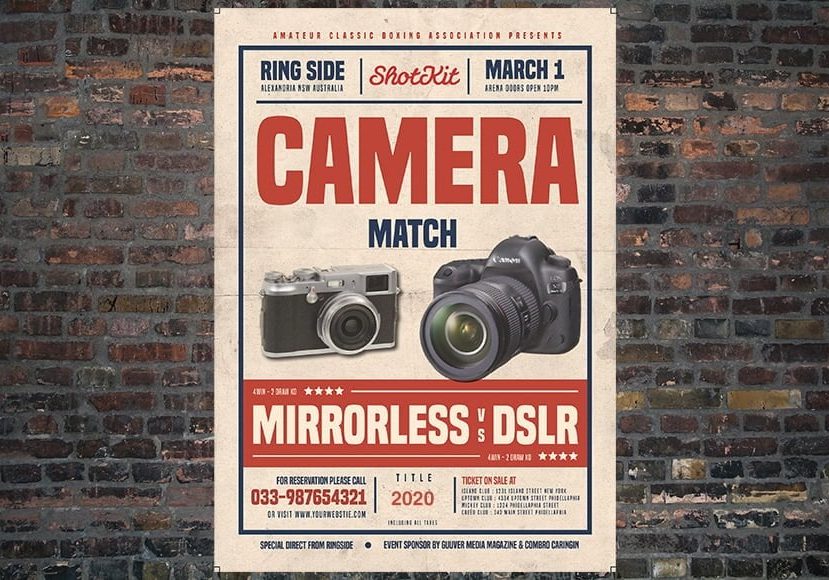
Should you buy an expensive DSLR camera or an expensive mirrorless camera?!
If you can’t decide between a mirrorless camera and a DSLR camera, we’ve put together the following DSLR vs mirrorless comparison to help you make up your mind:
Understanding the Technology
DSLR is short for digital single lens reflex; which means there’s a mirror inside the camera that reflects the photo onto an optical viewfinder. When you press the shutter button, the mirror moves to let the light hit the sensor and capture the image.
A mirrorless model doesn’t have a mirror, instead, it uses the same sensors to both capture and produce the image. From there, a preview of the image is generated by an EVF (electronic viewfinder) or LCD display.
Size and Weight
Compared to a DSLR camera body, mirrorless cameras have thinner and more lightweight bodies. That’s because DSLR models house a mirror and an optical viewfinder.
A mirrorless camera can be compact enough to fit in your pocket, which makes for better portability and ease of use.
This opens up various options for casual photographers as well as serious photographers who are always on the move and/or looking to fit more photo gear into their camera bag.
Build Quality/Durability
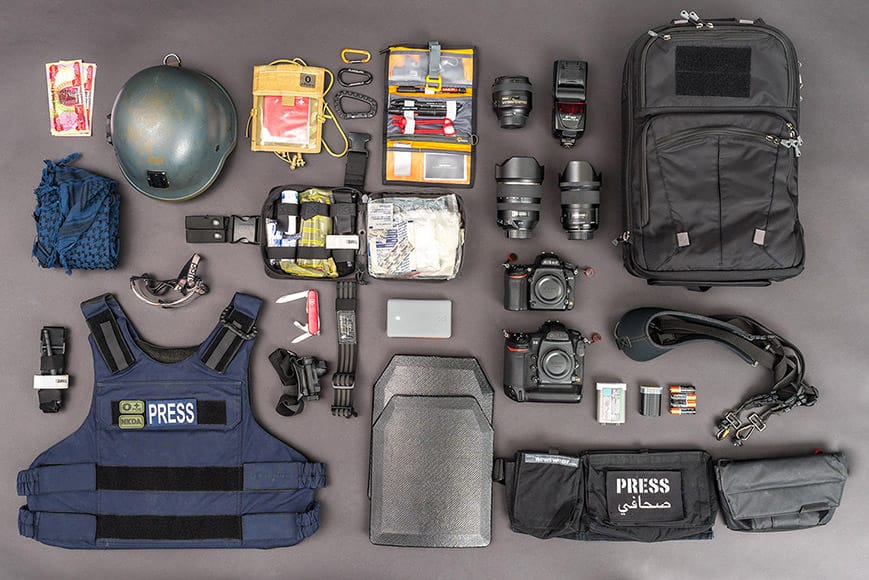
DSLRs are more commonly used by press/photojournalists due to their superior durability. Image credit: Alex Kuhni
This factor is debatable since both DSLR & mirrorless cameras offer durable, weather-sealed bodies that can withstand the elements.
However, if we compare flagship bodies, DSLR cameras can definitely take more knocks than the equivalent mirrorless camera.
This is why you’ll usually still see war photojournalists or extreme sports photographers favouring flagship DSLR bodies like the Nikon D6 or Canon 1DX Mark IV.
Image Quality
We have to say that, currently, DSLR cameras and mirrorless cameras are on par for image quality.
Mirrorless model cameras used to house smaller sensors, which led to lower quality images, but that’s no longer the case.
More sensitive chips now counteract the noise from smaller sensors in mirrorless models, whereas many mirrorless models have switched to larger sensors comparable to DSLR cameras.
Besides the sensor size, a DSLR camera and a mirrorless camera (at the same price point) nowadays have no edge over one another in different aspects affecting image quality such as low-light shooting, auto-focus, and image resolution.
Battery Life
DSLR cameras take the lead in battery life, which is a huge advantage for many photographers.
That’s because, unlike mirrorless cameras, a DSLR camera doesn’t use an EVF (electronic viewfinder) or LCD display to generate an image preview. These are highly energy-consuming components that take a toll on battery life.
Speed and Performance
You can expect fast performance from both mirrorless and DSLR cameras. The two technologies can deliver high shutter speeds for quick image capturing.
That said, mirrorless cameras are generally a bit faster thanks to using simpler mechanisms that rely on a mirror-free design.
As for video performance, mirrorless cameras are also a step ahead.
While both camera types offer fast autofocus capabilities, a DSLR camera is less likely to feature on-chip phase detection sensors because they’re tough to operate simultaneously with the mirror during video recording.
This means that a DSLR camera without on-chip phase detection will produce more blurry images in videos. This issue is virtually non-existent in mirrorless cameras.
Price
For many folks interested in buying a camera, the price tag is the deciding factor. You can find a mirrorless or DSLR camera at the entry-level, mid-level, and high-end price tiers.
- The average cost of an entry level DSLR camera is around $850, whereas the average cost of a mirrorless camera is about $1,000.
- Mid-level: the average cost of a DSLR camera is around $1650, whereas the average cost of a mirrorless camera is about $1,800.
- Professional: the average cost of a DSLR camera is around $4,500, whereas the average cost of a mirrorless model is about $5,000.
For mid-level and professional-level cameras, mirrorless and DSLR cameras offer quite evenly matched packages when it comes to features, performance, and power.
But on the beginner end of the spectrum, a DSLR camera provides better value for money in terms of image quality and battery life.
Lens Selection
DSLR cameras have been around for longer, so they have a larger selection of lenses available for photographers. Yet, the market for mirrorless camera lenses is making steady steps to catch up.
While you currently have more versatility than DSLR cameras, mirrorless cameras are projected to have higher adaptability. After all, mirrorless cameras accept DSLR lenses (by using lens adapters) but not the other way around.
Future-Proofing
DSLRs are well-established with more robust build quality. However, the current trend in innovation is heavily geared toward developing new technologies for mirrorless options. For instance, the on-chip phase detection sensors we mentioned earlier.
As a result, it’s easy to say that mirrorless cameras are far more future-proof than DSLRs at the moment.
Alternatives to Buying Expensive Digital Camera Equipment New
If you’re not ready to spend a hefty sum on a brand-new camera, you’re not entirely out of luck.
Here are some affordable alternatives to consider:
The Used Camera Market
Many photographers try to keep up with the advancement of camera technologies, so they’re always selling their older lenses and cameras at reasonable prices. This includes online platforms like KEH Camera, eBay, Kijiji, Craigslist, etc.
Renting Equipment
If you only need a camera for a certain project, you don’t need to commit to a purchase. Instead, you can find plenty of camera shops out there renting cameras and photography equipment.
Popular stores include Fotocare, Lens Rentals, AdoramaRentals, and K&M Camera.
Consider Point and Shoot Cameras
If you prioritize cost-effectiveness over anything else, point-and-shoot cameras would be an excellent choice to consider. They’re typically more affordable with some units delivering surprisingly good performance.
You can get point-and-shoot cameras under $300, or even check the best point-and-shoot film cameras, many of which are more affordable than your average entry-level DSLR camera.
Buy Older models
Newer camera generations are always associated with a reduction in the price of older models, making them a lucrative choice to pick, especially when they’re on sale.
What Camera Brands Are More Expensive Than Others?
Some camera brands focus mainly on developing high-end cameras featuring the latest of technology with every new generation, so they’re usually on pricier end of the scale, such as Leica, Hasselblad, and Fujifilm.
Here’s a general overview of the camera brand hierarchy in terms of price:
- Ultra-premium Medium Format Brands : These brands produce medium-format cameras which typically have much larger sensors than full-frame cameras. They are often used for high-end commercial photography and studio work.
- Hasselblad
- Phase One
- Premium Full-Frame Brands: These brands produce professional-level full-frame cameras that are used by many professionals and enthusiasts.
- Leica: Known for its rangefinder cameras and often priced at a premium even within the full-frame category.
- Canon’s EOS-1D Series: Canon’s flagship line of DSLRs.
- Nikon’s D Series (like D5, D6): Nikon’s flagship DSLRs.
- Sony’s A7/A9 Series: Their high-end mirrorless cameras.
- Mainstream and Professional Brands: These brands produce a wide range of cameras, from entry-level models to professional-grade equipment.
- Canon
- Nikon
- Sony
- Panasonic
- Fujifilm: Especially their X-Series and GFX medium-format series.
- Olympus (Note: Olympus’ camera division was transferred to a new company named OM Digital Solutions in 2020.)
- Pentax (Ricoh)
- Budget and Specialized Brands: These brands might offer more affordable options, or they may cater to niche markets.
- Sigma: Known more for lenses but they have some unique cameras.
- Ricoh : Offers specialized compact cameras like the GR series.
- GoPro: Known for action cameras.
- DJI: Known for drones but they also produce the Osmo line of cameras/gimbals.
- Legacy Brands and Others: Some historic brands have left the market or shifted focus, but their older cameras might still be found at varying price points.
- Konica Minolta
- Mamiya
- Yashica
Why are Leica cameras so expensive?
Leica cameras are often considered luxury items in the world of photography, and they come with a premium price tag.
Several factors contribute to the high cost of Leica cameras. These are some of the possible reasons why Leica cameras are so expensive:
- Craftsmanship and Materials: Leica cameras are known for their meticulous craftsmanship. Many of their cameras and lenses are assembled by hand, ensuring a high level of precision and quality. The materials used, such as metal and glass, are of top-notch quality, contributing to the camera’s durability and longevity.
- Optical Excellence: Leica lenses, often referred to as “Leitz” lenses, are renowned for their optical quality. They are designed to produce sharp images with minimal distortion, excellent color rendition, and unique bokeh. The process of manufacturing these lenses is rigorous, ensuring each lens meets the company’s high standards.
- Limited Production: Unlike mass-produced cameras from larger manufacturers, Leica produces cameras and lenses in smaller quantities. This limited production can lead to higher per-unit costs.
- Hand Assembled: The images below from Leica Rumours show the Leica SL2 being painstakingly assembled by hand, which is obviously a much more expensive and labour-intensive process than using robots.



- Brand Heritage: Leica has a long and storied history in the world of photography. Established in 1914, the brand has been associated with numerous iconic photographs and photographers. This heritage and the brand’s reputation add a premium to its products.
- Innovative Features: While Leica often maintains a classic design for its cameras, it doesn’t shy away from innovation. Features like the rangefinder system in their M-series cameras offer a unique shooting experience that many photographers value.
- Resale Value: Leica cameras and lenses tend to hold their value well over time. This is due in part to their build quality and the brand’s prestige. Many photographers view purchasing a Leica as a long-term investment.
- Niche Market: Leica targets a specific niche of photographers who appreciate the brand’s unique qualities, from its design ethos to its performance characteristics. By targeting a niche market, Leica can maintain higher prices.
- Aesthetic and Design: Leica cameras have a distinct and timeless design. The minimalist and functional design appeals to many photographers who value both form and function.
- Customer Service and Warranty: Leica is known for its excellent customer service and warranty repairs. The cost associated with maintaining such a high level of service is often factored into the product’s price.
Do You Really Need a Pricey Full Frame Digital Camera?
Full frame digital cameras come with several advantages compared to crop sensor cameras, including:
- Higher pixel density, which reflects better image quality and higher resolution
- Enhanced dynamic range to capture a wider spectrum of tones resulting in highly detailed shadows and highlights
- Improved depth of field, especially for portrait photography
- Better support for wide-angle photography
With such features under their belt, full frame cameras are designed for a serious/professional photographer who chases the best possible image quality.
However, hobbyists and amateur photographers may not need this level of sophistication in their gear.
See also: what are the cheapest full frame cameras?
Can you use a crop sensor camera for professional photography?
The short answer to this question is yes! You can definitely use a crop sensor camera for professional photography if you really know your way around camera setting adjustment and lighting.
In fact, many professional photographers use crop sensor cameras because they’re highly portable and budget-friendly while having a wide field of view for capturing landscapes.

Check out these 8 essential tools to help you succeed as a professional photographer.
Includes limited-time discounts.





